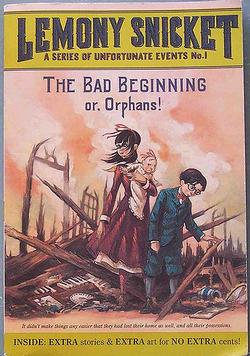A&E
Netflix revives well-known book series
By Tayzia Santiago ’20
February 9, 2017
Tags a+e
When I was in elementary school, I loved Lemony Snicket’s “A Series of Unfortunate Events,” so I was extremely excited when Netflix released an original series based on the books. The book series, originally written by Daniel Handler under the pen name Lemony Snicket, consists of thirteen novels about the misadventures of three orphaned siblings: Violet, Klaus, and Sunny Baudelaire. The show also follows the orphans’ tale, detailing their attempts at a normal life. These attempts are often thwarted by Count Olaf, an untalented actor who attempts to steal the Baudelaire children’s fortune.
The first thing that stood out to me about the show was the artistry of the filmmaking. From a muted color scheme to a well-cast set of actors, every detail seemed to flow together. The director clearly chose a very specific aesthetic and direction for the series, and even the acting matched the dreary and theatrical nature of the show.
One critique I have is that I felt almost as though I were watching a piece of art rather than catching a glimpse into people’s lives. One might argue that I’m watching a fantastical series and shouldn’t expect this level of realism.
Often times what draws us into fantasy is the humanity we see within a world other than our own. In any case, the characters struck me as one-dimensional, each only seeming to pursue a straightforward and simple goal, and their one-dimensionality bothered me at times. It seemed like they were part of the piece as a whole, serving only to improve the aesthetic rather than exist as fictional but realistic people.
Many aspects of the series masterfully served to create a child’s perspective without being childlike. The more I wondered about the one-dimensional characters, the more I realized that the books were written for children from the perspective of children.
Although Lemony Snicket narrates the show, his narration views the situation from the children’s perspective to create a sort of altered third person. Characters were either evil or good with little to no in between, for children often have much more black and white views of the world. The straightforward characters actually serve to better fit a child’s perspective.
The characters who were supposed to be helpful, with the exception of Uncle Monty, often times were easily fooled by Count Olaf, and unwilling to listen to the capable and intelligent orphans. This further creates a child’s perspective because children feel unheard by the adults around them and frustrated by the lack of control they have in their lives. The Baudelaire children are thrown from one situation and guardian to another without a choice in the matter.
Although the series presents an extreme, this creates a child-like perspective and appeals to children by relating to the lack of control in their lives, and their views of people and situations as very black and white.
This series’ fast pace creates a great balance between humor and drama, has an enjoyable amount of third-wall breaks, and a complicated and shocking plot that left me on the edge of my seat (or bed, considering I watched this via laptop).
As I mentioned previously, I really enjoyed the unique and artistic filmmaking that almost reminded me of an indie film because of the bold choices the director and actors made.
Overall, I really enjoyed the first season of this series, and would definitely recommend this show if you’re looking for something outside of the classic Netflix sitcom with an interesting plot.





